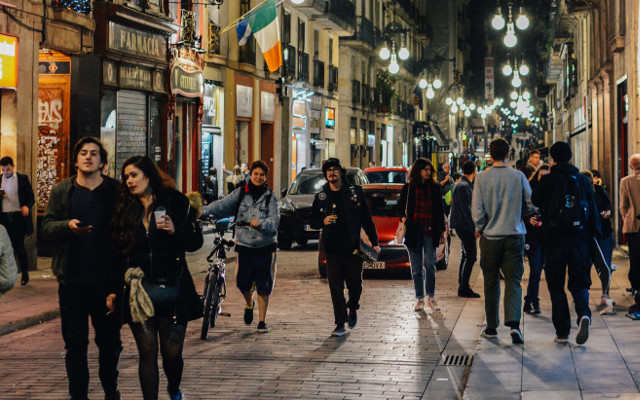Now that the pandemic has been raging for months, people are asking, when will the crisis end? Are we ready to emerge from the coronavirus lockdown? Many people have had to be hospitalized, and many, unfortunately, have died. While no one wants to contract the disease, people are starting to turn their attention to what comes next.
Ending the Coronavirus lockdown is on everyone’s mind. Many have been out of work for months, with no money coming in, while the monthly bills still need to be paid. National economies have been nearly shut down, creating a manufactured recession that will be with us for years to come. And stagflation, not seen since the 1970’s, will make an ugly comeback.
Everyone wants the crisis to end. But how to go about it? More weeks of lockdown will only extend the pain. But open the gates too soon and we risk the specter of a new surge of the disease.
Four case histories
Let’s look at four examples of how we can go about it:

Sweden
If you walk around Stockholm, Sweden today it would seem that there are no measures being taken against the Coronavirus. There are no mandatory stay-at-home orders, and most businesses, including schools, restaurants, and gyms, are still open. Most people are going to work as always. But gatherings of more than 50 people have been forbidden, and high-risk groups, such as the elderly, have been asked to self-isolate.
No doubt about it, no matter what you do you can’t save everyone. But hopefully the Swedes will build up herd immunity to the point where the virus will be conquered.
Just what is herd immunity? Remember that not everyone who contracts Coronavirus will get sick, and some that do get sick will recover, with no problems, thank you very much. These lucky people will be able to walk around without any further cares about the disease. And they will slow the spread of illness to others, who have not become immune themselves. Maybe that’s what has to happen anyway, regardless of the method used. So perhaps this is the best approach after all.

Italy
ltaly delayed their lockdown as long as they could. Even as the infection rate increased, they had a lets-live-life-as-usual approach that maintained the status quo for as long as possible. Now Italy is a hot spot, and a more severe and longer lockdown is necessary. But as I write, there is some talk about easing the restrictions.

Germany
Germany got started early, and slammed on a robust lockdown on the entire population except for “essential” workers. As a result, the rate of loss of life is much lower than in comparable countries.
A quick and strong response has enabled Germany to start talking about ending the restrictions. This is being done in stages — the first stage (20 April, two days ago) was to reopen hardware stores and smaller retailer businesses. Larger stores will reopen a week later, and a week after that, barbers and hair and nail salons. Schools will be reopened in stages.
Pro sporting events and concerts will have to wait until August 31, and if you’ve ever been to Octoberfest, you’re not going this year; it’s been officially cancelled. Bars, restaurants, day care centers, theaters, cinemas, and churches will remain closed indefinitely.
(Don’t hold me to these dates: I’ve noticed they keep moving them back.)
Masks have never been required, but they soon will be: starting 27 April masks will be mandatory to ride public transit and go into stores.

United States
The USA waited too long to impose restrictions, and has never had a unified policy response to the pandemic. Chaos and lack of planning reign, and certain individual states have made it clear that people coming to their state from “hot spots” are not welcome — or would at least have to isolate upon arrival.
Some notable politicians seem to be more concerned with their image and careers than safeguarding the public health. Squabbling over whether to lift the lockdown and when continues unabated. I suspect if any nation has a dangerous rebound in infection rates once they come out of lockdown, it will be this one.
So who’s right?
Unfortunately, I don’t know and neither do you. We will only know after the crisis is over when we can look back at what was done and how well it worked. We can only hope for the best at this point.
What were the lockdowns expected to accomplish, anyway?
There was a lot of talk about flattening the curve of the Coronavirus. What that means is the infection rate starts slow, builds up to a peak, then tapers down again. The key to keeping people alive is to keep the peak down to a manageable level — so everyone doesn’t show up at the hospitals at the same time, without enough beds, equipment, or doctors and nurses to treat them.
But flattening the curve won’t keep you from catching the disease once you leave lockdown. We can only hope that by the time we go back out into the world, the infection has slowed to the point where our risk is less.
Better than flattening the curve
Much better than flattening the curve is eradicating the disease. Already there’s a treatment that shows some promise. The most dangerous part of the Coronavirus is when the immune system overreacts, unleashing a cytokine storm, the equivalent of using a cannonball to kill a fly — the results aren’t going to be pretty.
In the acute stage of COVID-19, the lungs fill up with fluid as the immune system first underreacts then overreacts to the challenge. It’s this excess of fluid that’s the truly dangerous part. But a timely treatment with Actemra can stop the flood and give the body a chance to recover.
And teams around the world are working on a vaccine. It could be a year or more away, but once we have that, we can all breathe a collective sigh of relief.
Be sure to check out my other two posts on the Coronavirus:
Life after the Coronavirus: Will things change?
Financial Consequences Of The Coronavirus
